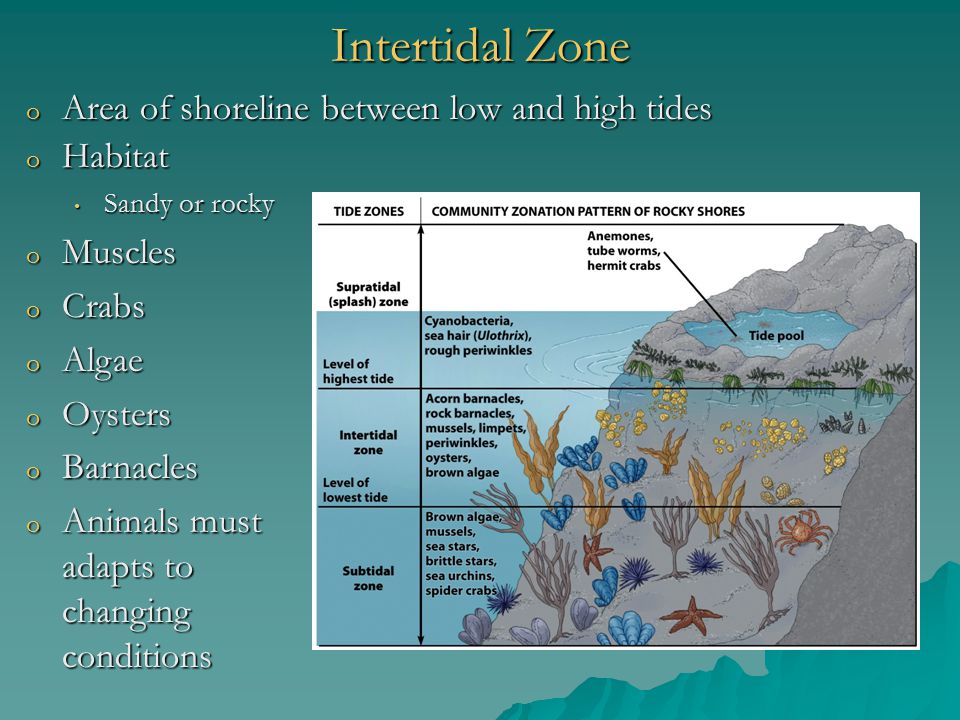What does Rachel Carson mean when she says only the most hardy and adaptable can survive in a place so mutable?
1 Answer
This is a line taken from Rachel Carson's The Marginal World ** . Here she talks about 'edge of the sea', which is actually the intertidal region which she says now belongs to land, now to the sea. The area is also called littoral zone** .
The area is submerged in water during high tide but exposed during low tide. This is why she says its so mutable: waves are breaking, periodic flooding occurs, and when exposed, there's exposure to sun, rain, wind and temperature changes akin to land.

( )
)
Organisms which are living in this intertidal area, are able to survive and reproduce successfully in ever changing environmental conditions. And such organisms are not a handful in number: there are too many of them, crowding every inch of the shore line.
In Carson's words:
In this difficult world of the shore, life displays its enormous toughness and vitality by occupying almost every conceivable niche.
Visibly, it carpets the intertidal rocks; or half hidden, it descends into fissures and crevices, or hides under boulders, or lurks in the wet gloom of sea caves. Invisibly, where the casual observer would say there is no life, it lies deep in the sand, in burrows and tubes and passageways. It tunnels into solid rock and bores into peat and clay. It encrusts weeds or drifting spars or the hard, chitinous shell of a lobster. It exists minutely, as the film of bacteria that spreads over a rock surface or a wharf piling; as spheres of protozoa, small as pinpricks, sparkling at the surface of the sea; and as Lilliputian beings swimming through dark pools that lie between the grains of sand.
Also read this to understand the challenges an organism must overcome to survive in littoral zone.
